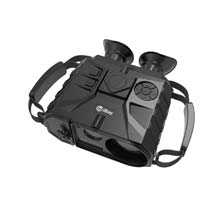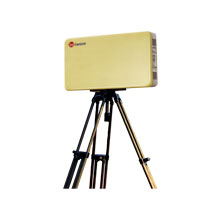What is Thermal Imaging for Home Energy Audit?

In the quest for a more energy-efficient home, understanding the nuances of thermal imagers can be a game-changer. Thermal imaging, a technology once reserved for military and industrial use, has now found its way into the realm of home energy audits, offering invaluable insights into energy consumption and potential savings. Let's delve into what thermal imager for home energy audits entails and how it can benefit homeowners.
Unveiling the Power of Thermal Imaging
Home energy audits are crucial for identifying areas of energy wastage and improving overall efficiency. Traditionally, audits involved manual inspections and guesswork, but with the advent of thermal imaging technology, the process has become more accurate and efficient.
Understanding Thermal Imaging: Shedding Light on Heat Variations
Thermal imager relies on infrared technology to detect and visualize temperature variations in objects and surfaces. By capturing these heat signatures, thermal cameras can identify areas of heat loss or gain, making them indispensable tools for home energy audits.
Benefits of Thermal Imaging in Home Energy Audits
One of the primary benefits of a thermal camera is its ability to pinpoint insulation gaps and air leaks that may go unnoticed during visual inspections. These hidden issues can significantly impact energy efficiency and contribute to higher utility bills. Additionally, thermal imagers can help assess the effectiveness of existing insulation and identify areas that require improvement.

How Thermal Imaging is Used in Home Energy Audits
During a thermal energy audit, a certified technician uses a thermal camera to scan the interior and exterior of the home, capturing images that reveal temperature differentials. These images are then analyzed to identify potential areas of concern, such as poorly insulated walls, drafty windows, or inadequate weather sealing.
Choosing the Right Thermal Imaging Equipment
When selecting thermal camera equipment for home energy audits, it's essential to consider factors such as resolution, sensitivity, and ease of use. While professional-grade thermal cameras offer superior image quality and accuracy, there are also more affordable options available for DIY enthusiasts.

DIY vs Professional Thermal Imaging Audits
While DIY thermal imaging can provide valuable insights into energy issues, professional audits offer a comprehensive assessment backed by specialized training and expertise. Investing in a professional energy audit may yield greater long-term benefits, including increased energy savings and improved comfort.
Tips for Interpreting Thermal Imaging Results
Interpreting thermal imaging results requires a basic understanding of temperature gradients and color variations. Cooler areas typically appear blue or green, while warmer areas appear yellow or red. By analyzing these patterns, homeowners can prioritize energy-saving improvements effectively.

Future Trends in Thermal Imaging for Home Energy Efficiency
As technology continues to evolve, so too will the capabilities of the thermal camera for home energy audits. Advancements in sensor technology and data analytics are paving the way for more accurate and insightful assessments. Integration with smart home systems will also enable real-time monitoring and optimization of energy usage.
Harnessing the Power of Thermal Imaging for Energy Efficiency
Thermal imaging is a valuable tool for home energy audits, offering unparalleled insights into energy consumption and efficiency. Whether you opt for a DIY approach or enlist the help of professionals, investing in the thermal camera can lead to significant cost savings and environmental benefits in the long run.

















